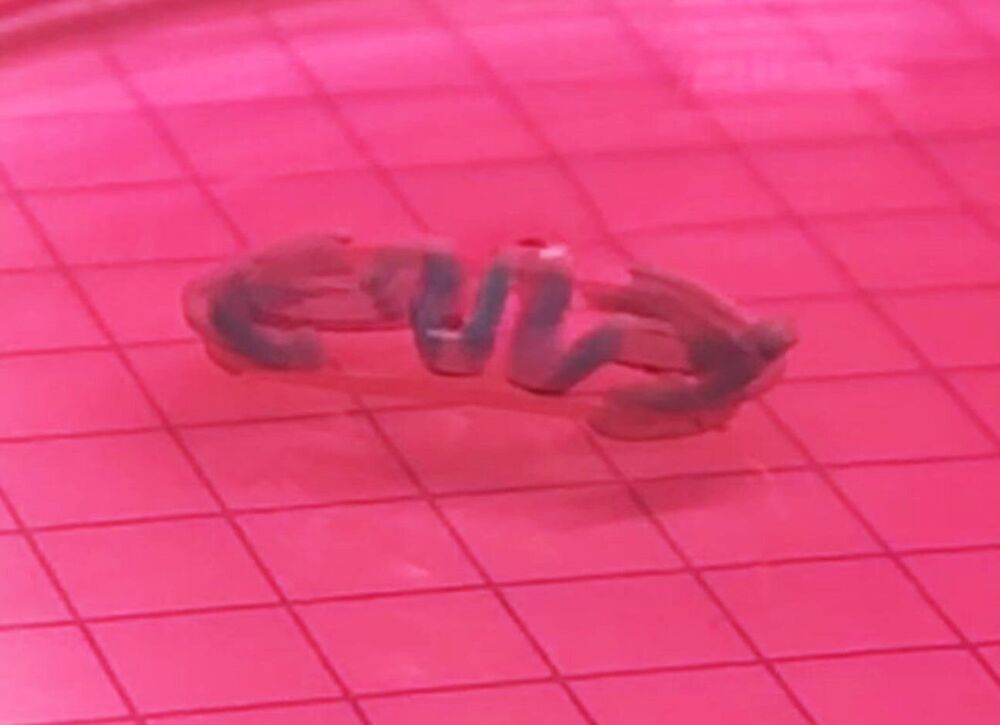A team of researchers working at Barcelona Institute of Science and Technology has developed a skeletal-muscle-based, biohybrid soft robot that can swim faster than other skeletal-muscle-based biobots. In their paper published in the journal Science Robotics, the group describes building and testing their soft robot.
As scientists continue to improve the abilities of soft robots, they have turned to natural materials such as animal tissue. To date, most efforts in this area have involved the use of skeletal or cardiac muscles—each have their strengths and weaknesses. Skeletal-muscle-based biobots have, for example, suffered from lack of mobility and strength. In this new effort, the researchers in Spain have developed a new design for a tinyskeletal-muscle-based soft robot that overcomes both issues and is therefore able to swim faster than others of its kind.
To make their biobot, the researchers used a simulation to create a spring-based spine for a swimming creature shaped like an eel. The simulation allowed the researchers to optimize its shape. They then 3D printed the skeleton (which was made of a polymer called PDMS) and used it as a scaffold for growing skeletal muscles. The finished robot was approximately 260 micrometers long—its shape allowed for propulsion in just one direction. The biobot moves when given electrical stimulation; the charge incites the muscle to contract, which compresses the skeletal spring inside. When the stimulation is removed, the energy in the spring is released, pushing the biobot forward.
